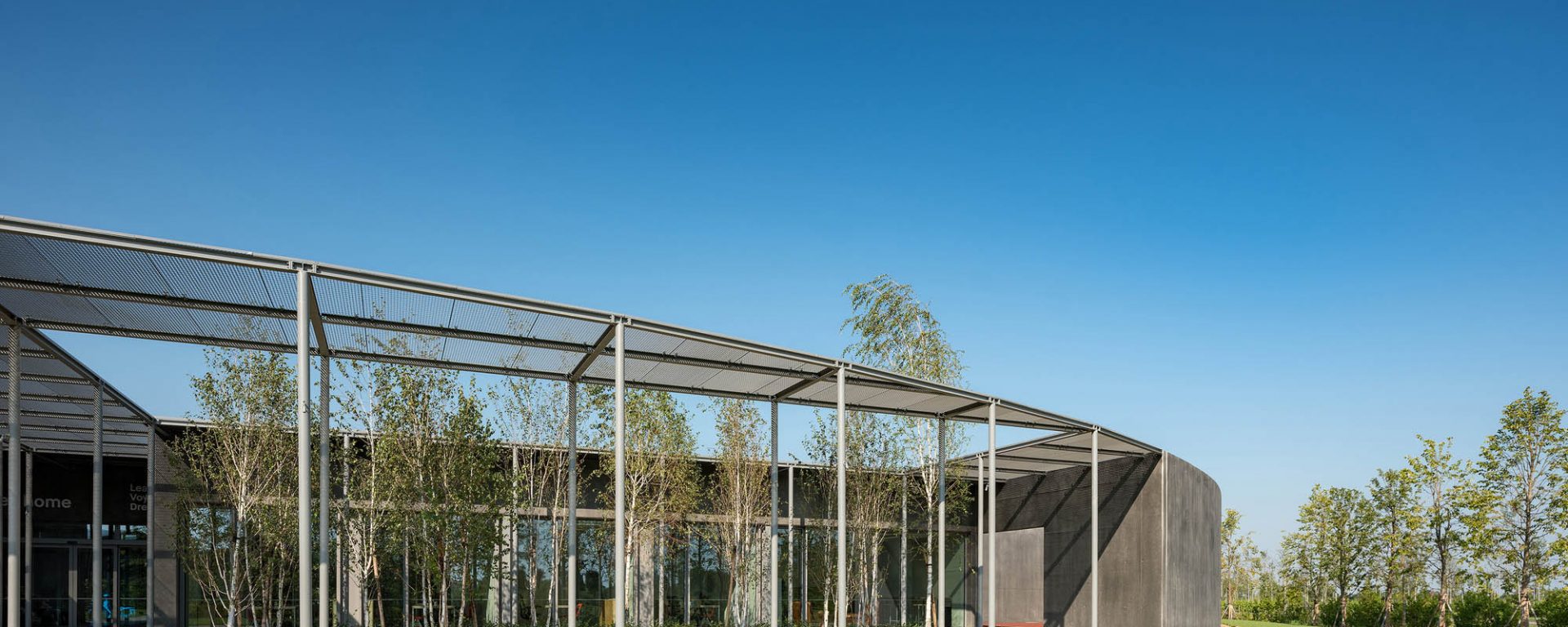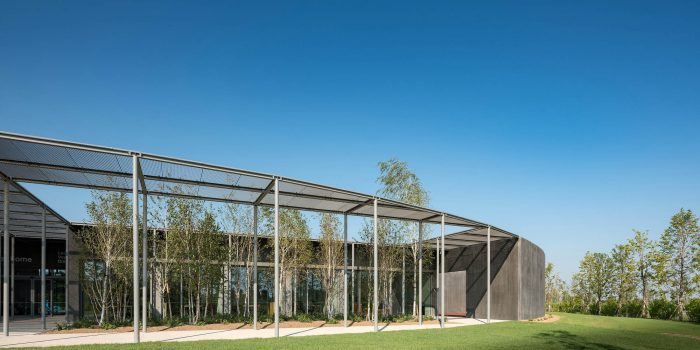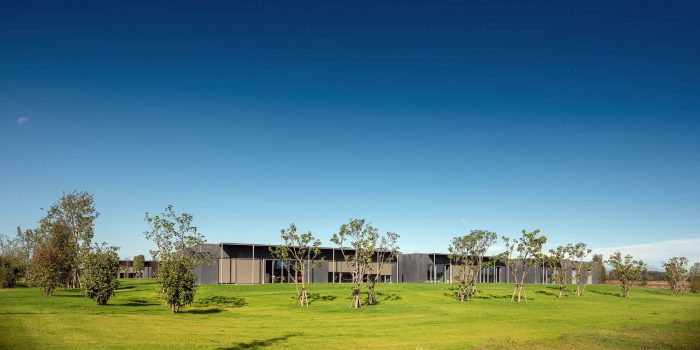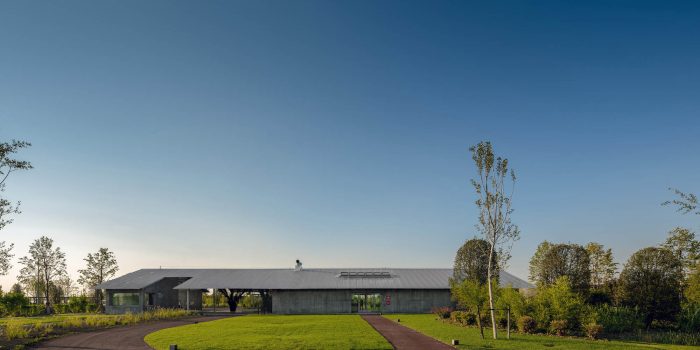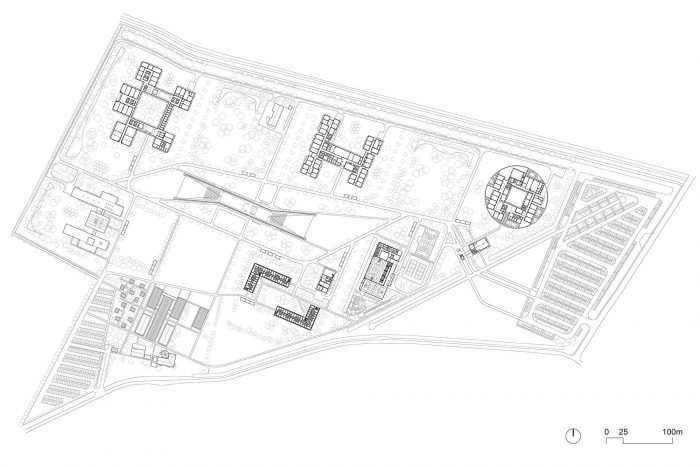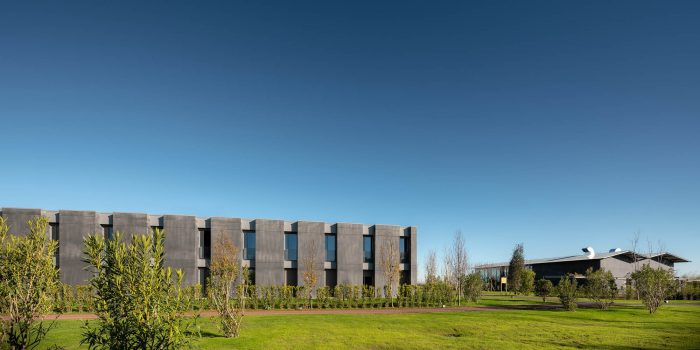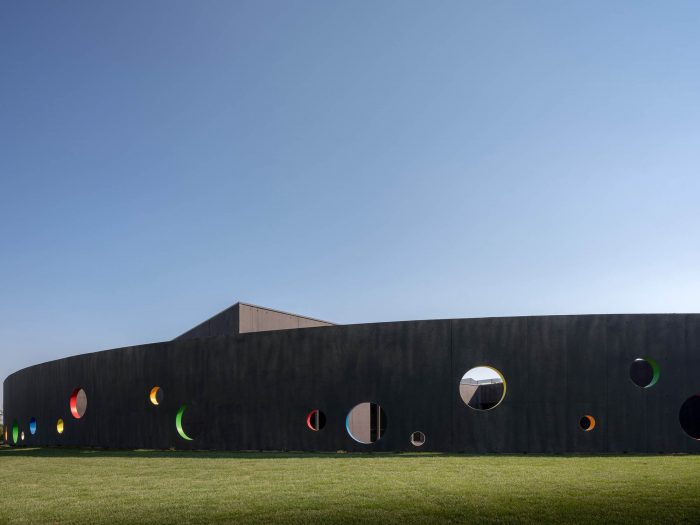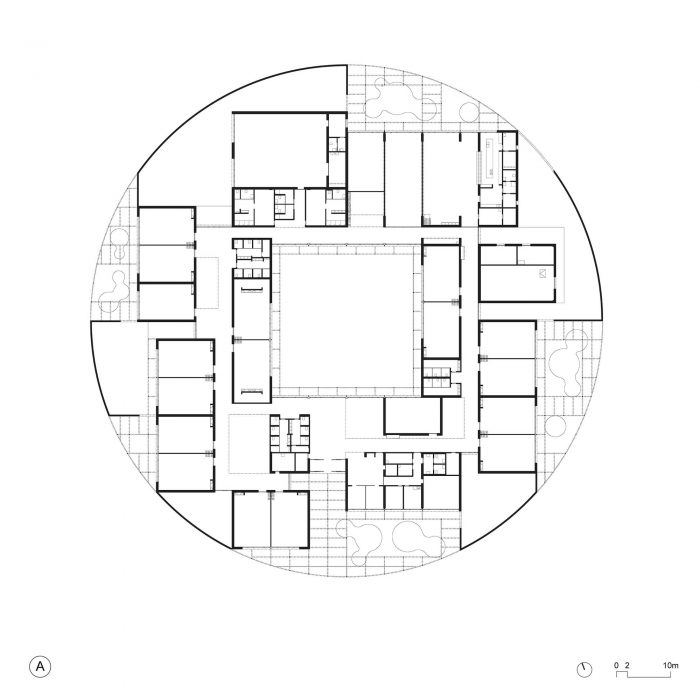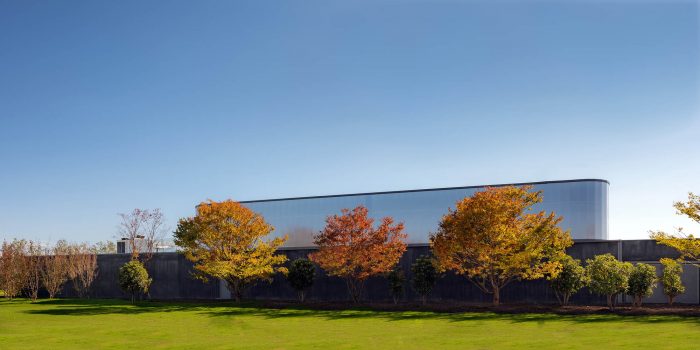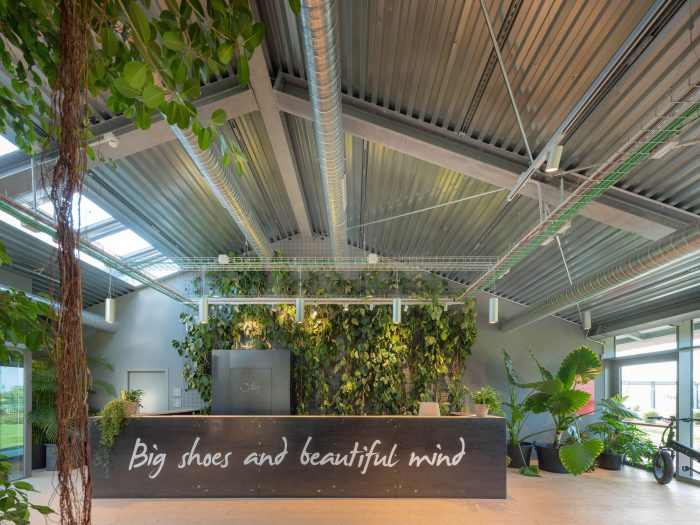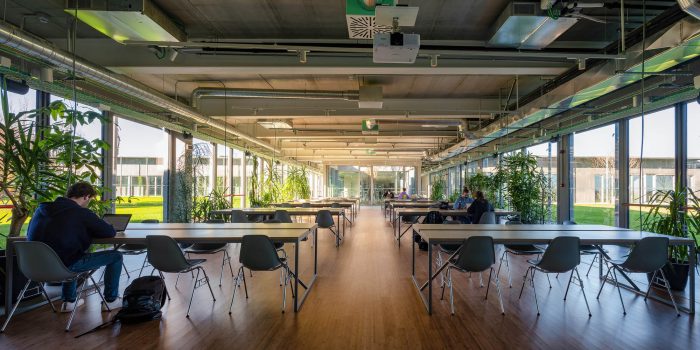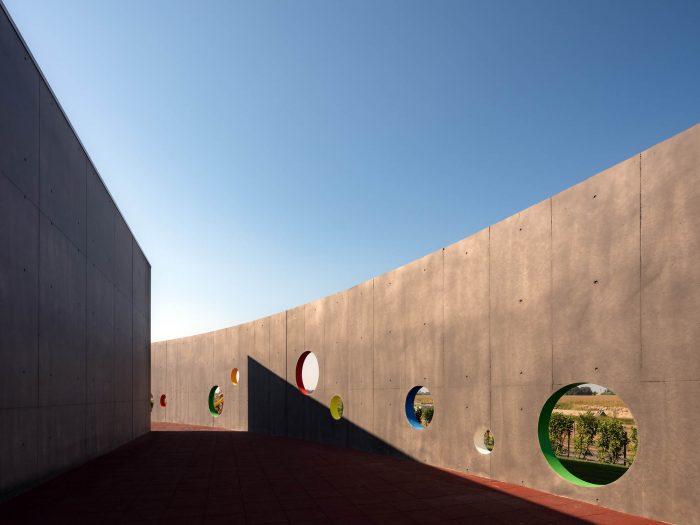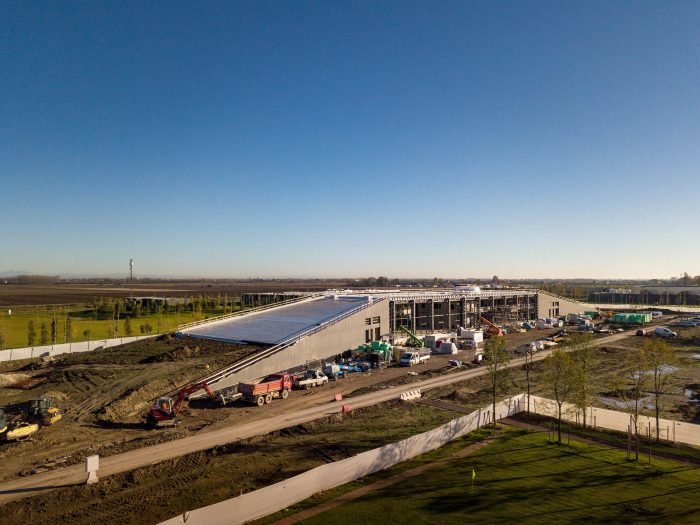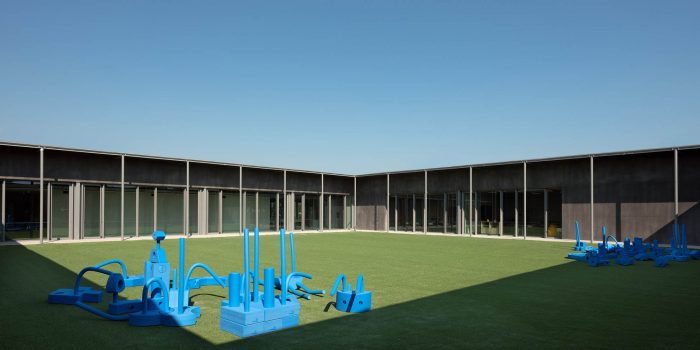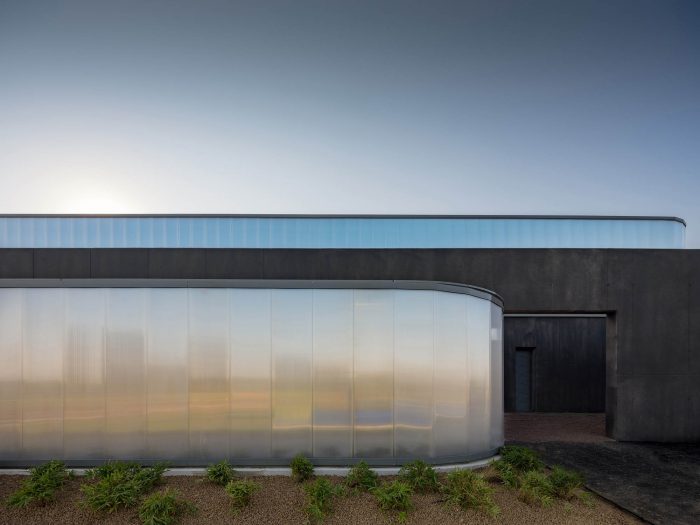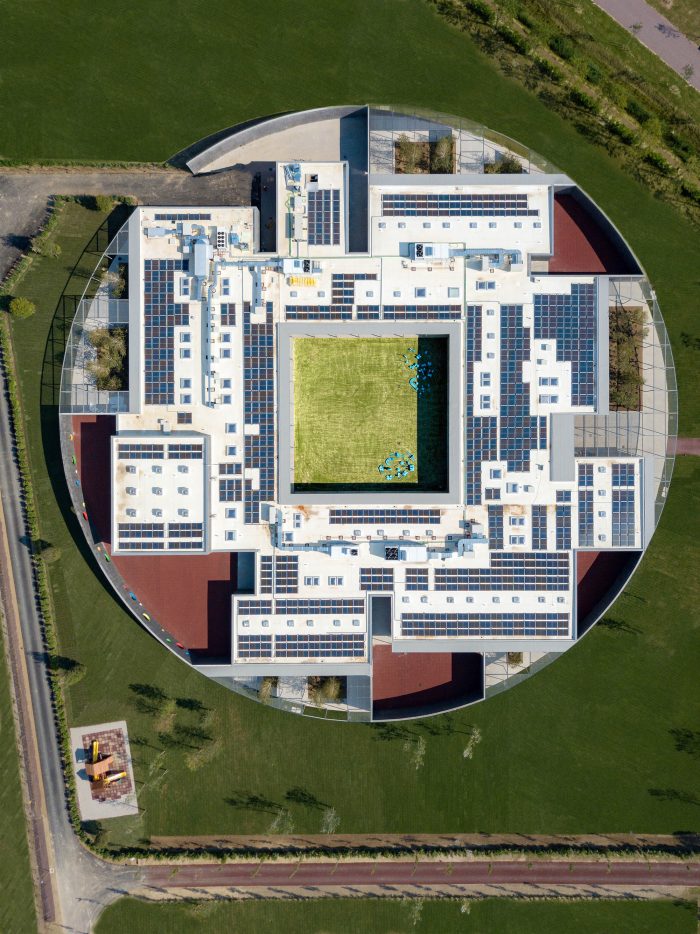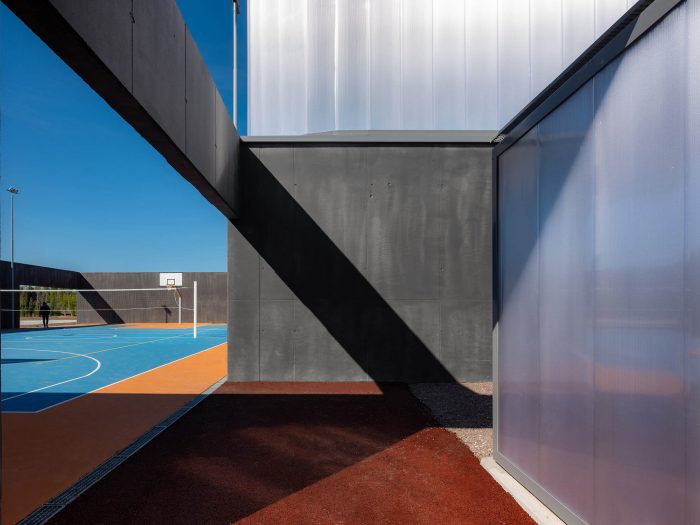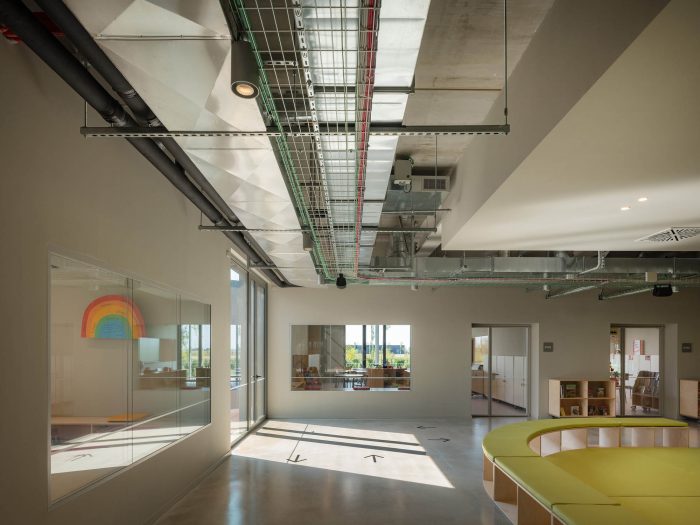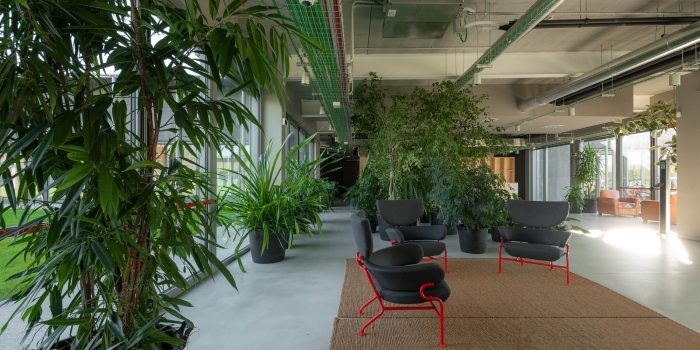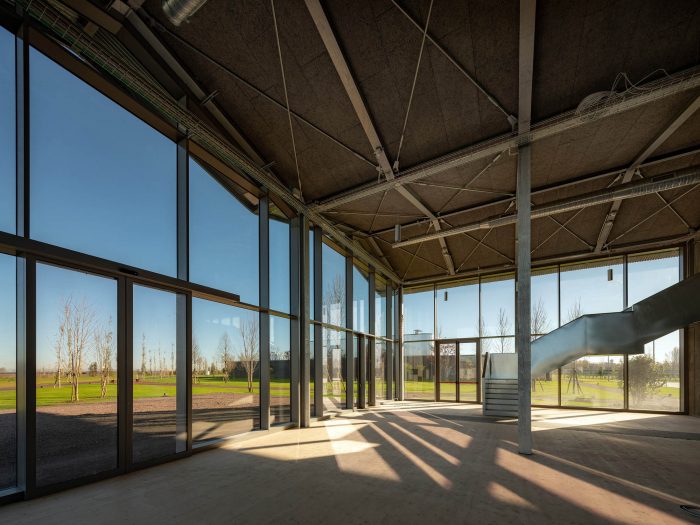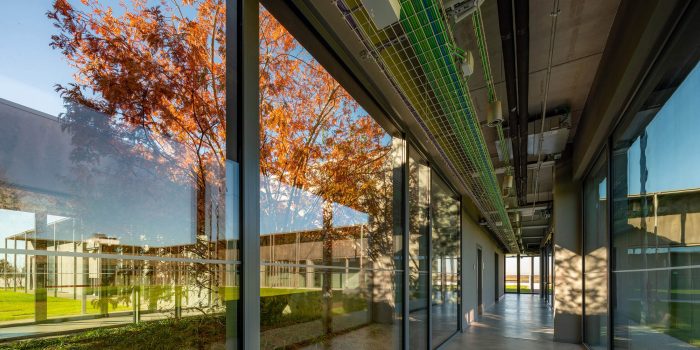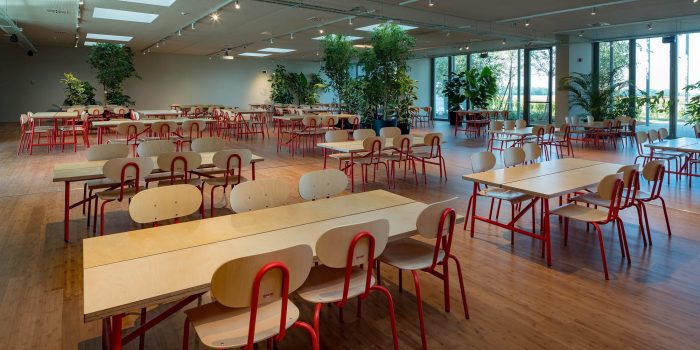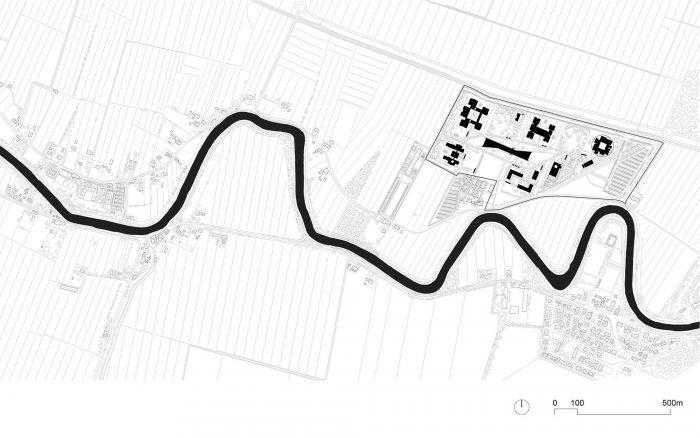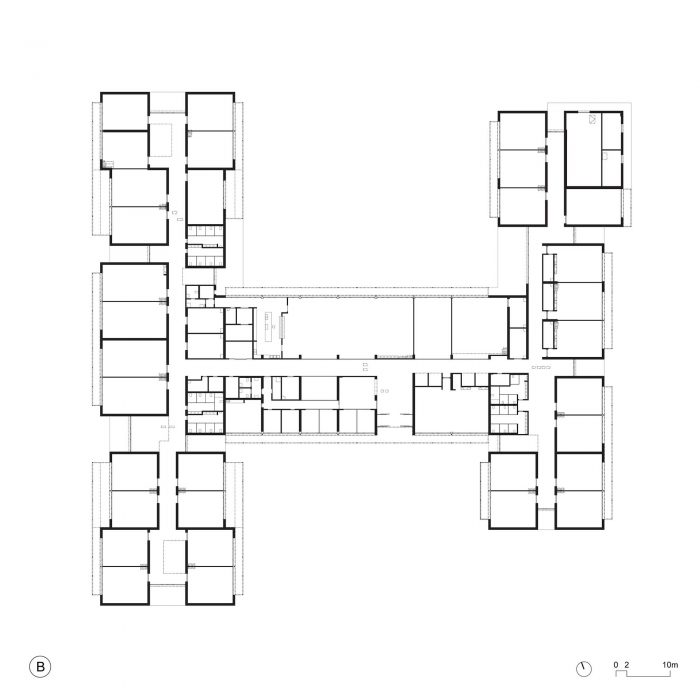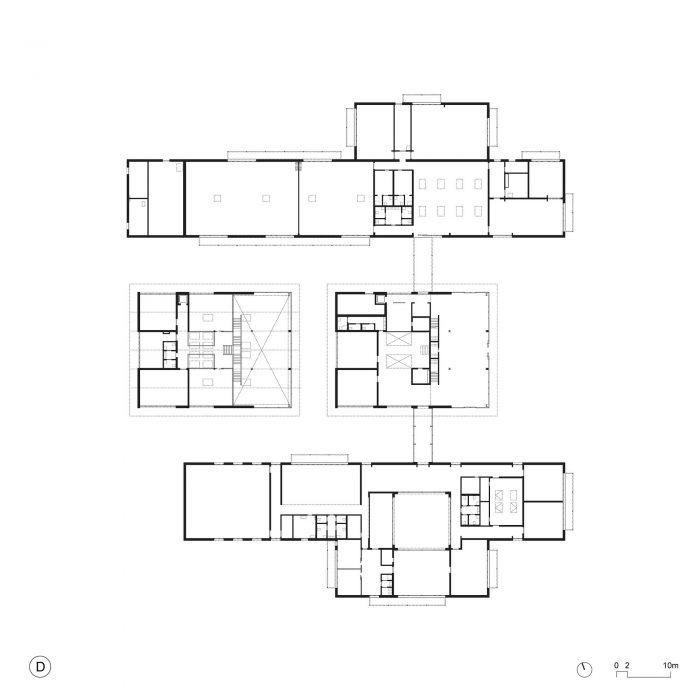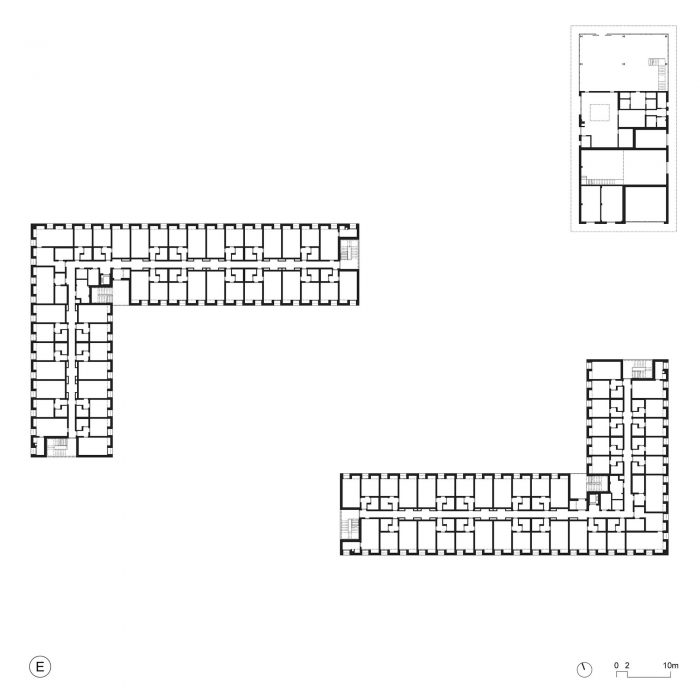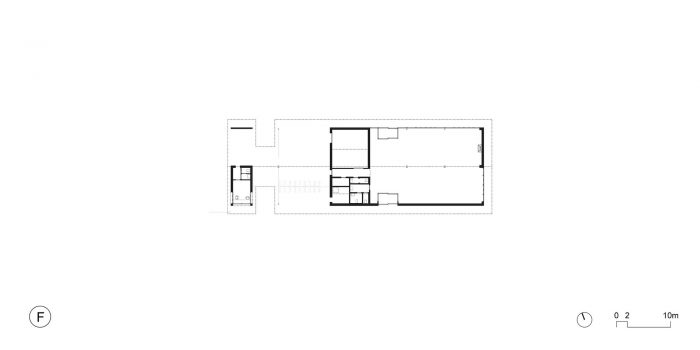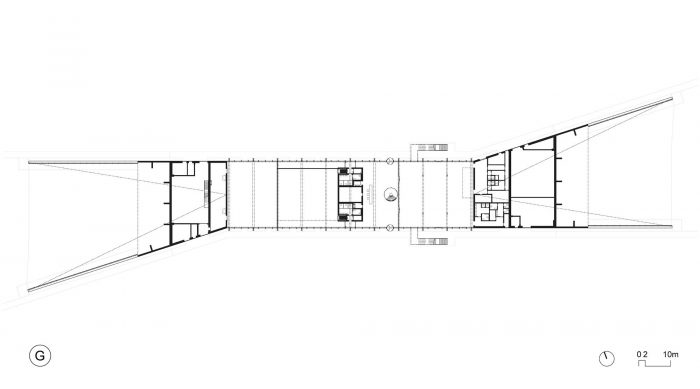H-FARM CAMPUS是一个雄心勃勃的项目:在特雷维索的乡下建立一个高教园区,由于靠近威尼斯机场,它位于一个与世隔绝的地方,但同时也是一个国际化的地方。 H-FARM发起的挑战包括在Sile河沿岸30公顷的区域内建造教育和服务建筑,靠近H-FARM总部,即推广公司,其目的是通过融合国际学校系统和使用技术为学习服务来培训年轻人和儿童。该综合体可容纳从幼儿园到大学的儿童,并提供诸如欢迎中心、学生宿舍、食品服务温室、带运动场的体育馆以及带图书馆和会议空间的大型中央社区建筑等服务。
H-FARM CAMPUS is an ambitious project: a high education Campus in the countryside of Treviso, set in an isolated but at the same time international location thanks to its proximity to Venice airport. The challenge launched by H-FARM involves the construction of buildings for education and services in a 30 ha area along the river Sile, close to H-FARM headquarters, the promoting company, with the aim of training young people and children by merging the international school system and the use of technologies at the service of learning. The complex accommodates children from kindergarten to university and offers services such as a welcome center, a student house, a greenhouse for food service, a gymnasium with sports fields, and a large central community building with a library and meeting spaces.
新的干预措施与现有的核心区保持连续性,使用了部分从历史建筑学角度来看不相关的建筑(包括一些军事用途的建筑)拆除后获得的体量,目的是提出一个 “零立方 “干预措施。建筑物最多只有两层,尊重环境的几何形状,并防止增加物理障碍,打断周围乡村的整体视野,实验新的乡村性原则。大窗户、天井、雨棚和内部庭院是欣赏自然和沉浸在周围景观中的地方:建筑为植被留下了空间。开放的空间也成为一个教育场所,以刺激新的一代人去了解和尊重这片土地:景观引导了建筑和技术选择,而不是相反。
The new intervention is in continuity with the existing core, using volumes partly obtained from the demolition of buildings not relevant from a historical-architectural point of view (including some buildings for military use), with the aim of proposing a “zero-cube” intervention. The buildings are developed on a maximum of two floors respecting the geometry of the context and preventing the raising of physical barriers that interrupt the overall vision of the surrounding countryside, experimenting with the principles of new rurality. The large windows, patios, canopies, and internal courtyards are places from which to admire nature and be immersed in the surrounding landscape: architecture leaves room for vegetation. The open space also becomes an educational place in order to stimulate the new generations to knowledge and respect the territory: the landscape has guided architecture and technical choices, not vice versa.
总体规划包括八栋建筑的建设,以及一些服务性建筑。园区的入口是通过接待处(F),这是一个单层建筑,其特点是有一个凸出的斜屋顶,位于Via Annia(该地的历史考古)的更新路线和来自公共停车场的路径之间的交叉点。在中环和中环之间的带状地带,位于更北边,有三座学校建筑:一座是小学专用建筑(A),一座是中学专用建筑(B),一座是大学专用建筑(C)。在内环和外环的交汇处,靠近该地区的西部边界,除了现有的H-FARM核心区外,还有一个由两栋办公用建筑组成的综合体(D)。
The masterplan involves the construction of eight buildings, in addition to some service volumes. The access point to the campus is through the reception (F), a one-storey volume characterized by a projecting pitched roof, located just beyond the intersection between the renewed route of Via Annia (historical archaeology of the place) and the paths coming from the public parking. Within the belt placed between the central ring and the secondary one, located further north, are three of the school buildings: one building dedicated to elementary school (A), one to secondary education (B), one to university-level courses (C). At the meeting point between the inner and outer ring, near the western border of the area, in addition to the existing nucleus of H-FARM, there is a complex consisting of two buildings for office use (D).
一方面,它是培训路径的自然延续,另一方面,它是走向H-FARM这样一个以 “有意识 “地使用新技术为基础,不断创新知识应用的商业现实的桥梁。继续向东,被另一片绿地隔开,我们见到了学生宿舍(E),它由两栋学生宿舍和一栋提供餐饮服务和公共洗衣房的建筑组成。再往前走,圈内有室内和室外的体育设施(H)。在这个圆环的中心,有一座由RSHP–Rogers Stirk Harbour + Partners设计的多功能建筑(G):作为主要集体活动的参考点,如会议、图书馆、饮食、休闲时间,该建筑成为一座全景桥,从这里可以观察整个校园,也是各部分之间的物理联系。
On one hand, it is a natural continuation of the training path, on the other hand, it is a bridge towards a business reality, such as H-FARM, based on continuous innovation in the application of knowledge with the “conscious” use of new technologies. Continuing eastward, separated by another green area, we meet the student residence (E), composed of two buildings for students’ accommodation and a building hosting dining services and common laundry. A little further on, the circle closes with the sports facilities (H), indoors and outdoors. At the center of this ring, a multipurpose building (G) designed with RSHP – Rogers Stirk Harbour + Partners: a reference point for major collective activities such as conferences, library, food, leisure time, the building becomes a panoramic bridge from which to observe the entire campus and a physical link between its parts.
建筑师:ZAA Zanon Architetti Associati
面积:27000平方米
年份:2020年
摄影:Marco Zanta
制造商:Isoplam, Schuco
组长:Mariano Zanon
合伙人:Alessio Bolgan, Bruno Ferretti
建筑师团队:Marco Barbato, Matteo Barzi, Erika Bettin, Sara Bocus, Cristina Cappellari, Elisa Ioime, Federico Munaretto, Davide Rachello, Matteo Scarioli, Cecilia Salmaso, Nicola Strametto, Matteo Tomasi, Maddalena Vedana
基础设施:Sinergo S.p.A.
BIM:DVA DVisionArchitecture
城市:Roncade
国家:意大利
Architects: ZAA Zanon Architetti Associati
Area: 27000 m²
Year: 2020
Photographs: Marco Zanta
Manufacturers: Isoplam, Schuco
Group Leader:Mariano Zanon
Partners:Alessio Bolgan, Bruno Ferretti
Architects Team:Marco Barbato, Matteo Barzi, Erika Bettin, Sara Bocus, Cristina Cappellari, Elisa Ioime, Federico Munaretto, Davide Rachello, Matteo Scarioli, Cecilia Salmaso, Nicola Strametto, Matteo Tomasi, Maddalena Vedana
Infrastructures:Sinergo S.p.A.
BIM:DVA DVisionArchitecture
City:Roncade
Country:Italy

